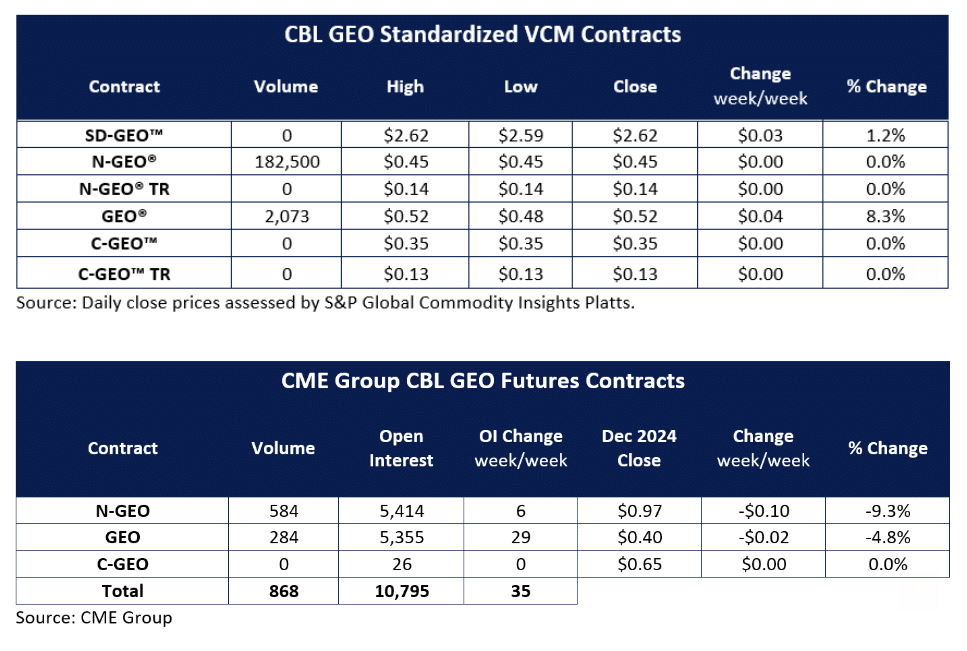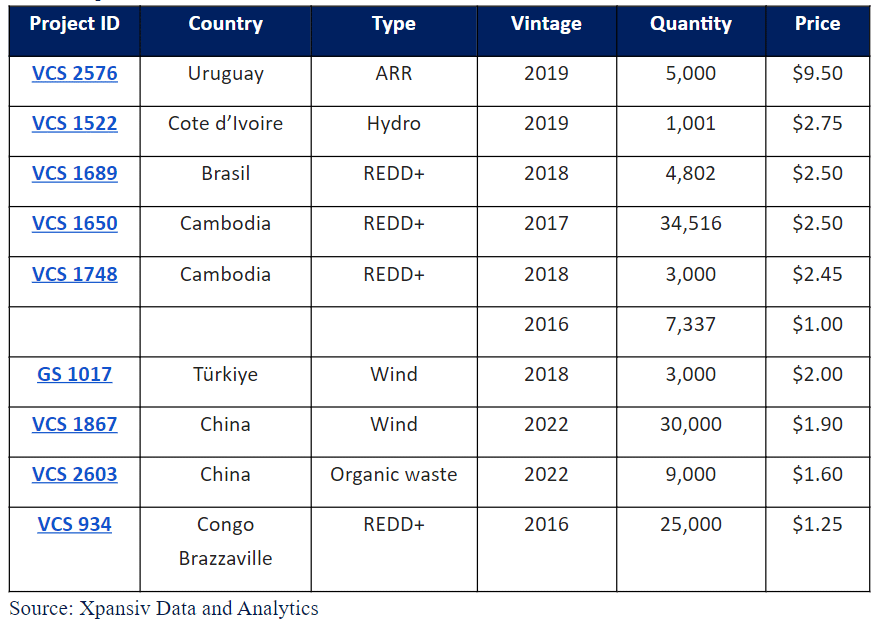Xpansiv voluntary carbon credit trading data saw a significant divergence in prices for nature-based and technology-based carbon credits. The report is from Xpansiv Data and Analytics, which offers a comprehensive database of spot firm and indicative bids, offers, and transaction data.
Xpansiv delivers extensive market data from CBL, the world’s largest spot environmental commodity exchange. It provides daily and historical data on bids, offers, and transactions for carbon credits, compliance and voluntary renewable energy certificates, and Australian Carbon Credit Units (ACCUs) traded on the CBL platform.
The exchange recently secured a major capital raise from Aramco Ventures to further enhance its environmental markets infrastructure solutions.
The spot data is further enhanced by forward carbon prices from top market intermediaries, along with aggregated registry statistics and ratings from leading providers.
Nature-Based Credits Surge While Energy Sector Prices Drop
Last week saw large blocks of Verified Carbon Standard (VCS) Nature Group Eligibility (N-GEO)-eligible and Climate Action Reserve (CAR) nature credits driving the 20-day moving average of recent-vintage AFOLU (Agriculture, Forestry, and Other Land Use) credits to $12.05, a 125% week-over-week increase. Conversely, a significant block of Asian renewable credits pushed the energy sector average price down by 60% to $0.76.
These blocks accounted for most of the 316,124 metric tons traded on CBL last week. This is composed of 224,730 nature credits and 91,394 energy credits. CME Group’s emissions futures also reflected this trend, trading 584,000 tons through CBL N-GEO and 284,000 via CBL GEO futures contracts.
 Specific credit trades on CBL included vintage 2019:
Specific credit trades on CBL included vintage 2019:
- VCS 1477 Katingan credits at $6.00,
- ACR 556 industrial process credits at $2.85,
- ACR 658 credits at $2.30, and
- Vintage 2020 VCS 1753 Indian solar credits at $1.25.
Who Leads the CBL REC Markets?
Last week, a $9.50 offer for 5,000 tons of vintage 2019 VCS Afforestation, Reforestation, and Revegetation (ARR) credits from Uruguay was reposted. New and renewed offers for VCS and Gold Standard renewable energy and REDD+ (Reducing Emissions from Deforestation and Forest Degradation) credits ranged between $1.00 and $2.75.
Project-Specific Credit Offers on CBL
 REC trading activity on CBL was light but included larger blocks of bilaterally traded PJM credits settled via the exchange, along with smaller PJM and NEPOOL trades matched on screen.
REC trading activity on CBL was light but included larger blocks of bilaterally traded PJM credits settled via the exchange, along with smaller PJM and NEPOOL trades matched on screen.
- Virginia Credits: 2024 Virginia credits traded at $0.25, closing the week at $35.25.
- New Jersey Solar Credits: Over 1,400 2023 New Jersey solar credits were matched at $207.50, $1.50 higher than the previous week’s close, with an additional 1,500 credits cleared via reported trade.
- New Jersey Class 2 Credits: 355 vintage 2024 RECs were matched at $37.50.
- NEPOOL Credits: 189 Massachusetts Class 2 non-waste credits were matched at $31.50.
In related news, the White House released new voluntary carbon credit guidelines to promote high-integrity emissions reductions and support nature-based projects and carbon removal technologies.
Xpansiv’s data highlights a stark contrast in the carbon credit market: with nature-based credits experiencing a significant price surge while energy sector credits see a sharp decline. This divergence underscores the growing demand for high-integrity, nature-based solutions in the voluntary carbon market.
As companies strive to meet their net zero targets, understanding these market dynamics will be crucial for making informed investment and sustainability decisions.

